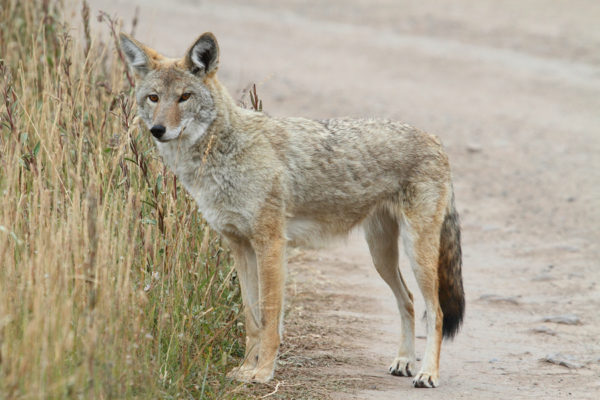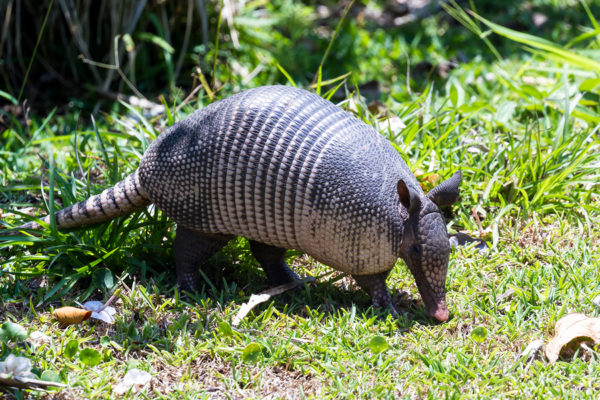As the cold winter months descend upon us, our first instinct is to head indoors for warmth and shelter. Animals have this same instinct during winter and will start looking to escape from the elements. They will usually look for holes, tunnels, logs, rock or leaf piles to burrow in but, if they are near neighborhoods, your home might look just as inviting to them.
Did you rake and bag your leaves this fall? Did you repair those holes in your deck, garage, or siding? Did you enclose your crawlspace and cap your chimney? If the answer is no, then you may have left an open invitation for critters to come into your home. Common winter wildlife invaders include squirrels, rats and mice, raccoons, and spiders. But don’t forget some lesser known winter animals, as well. Check out these four unusual winter pests and what you can do to prevent them.
OPOSSUMS:

APPEARANCE:
- About 2 feet long
- About 10 lbs.
- Long, light grey hair
- Hairless round ears
- Scaly tail
- Five fingers on their front feet, four fingers and opposable thumbs on their rear feet
HABITAT:
- Establishes home within existing structures (hollow logs, garages, crawlspaces, under buildings, inside burrows)
- Lives close to their food sources
DIET:
- Omnivore
- Will eat anything it can find
- Usually eats fruit, grass, insects, mammals, birds, and fish
BEHAVIOR:
- Marsupial (carries young in a pouch)
- Sluggish and slow
- Nocturnal
- Excellent climbers
- Produces a repulsive smell
- Plays dead as a defensive mechanism
THREAT:
- Not dangerous to humans as long as they aren’t cornered
- May carry diseases of concern to humans (e.g. rabies) but transmission is extremely rare
- Always handle (dead or alive) with gloves and wash hands thoroughly afterwards
SIGNS:
- You see them out, especially at night
- Usually see or hear around garbage cans or in attics
- Damage to lawns and gardens from digging for food
- Eaten pet food or birdseed
PREVENTION:
- Opossums are protected species in many areas so check local laws and regulations before trapping or relocating
- Eliminate food sources by keeping pet food inside and removing uneaten birdseed at night
- Keep garbage cans closed and secure with bungee cords, cinder blocks, or latches
- Put garbage cans out for pickup in the morning rather than overnight
- Keep pets inside at night
- Keep outdoor grills and grease catch cans clean
- Secure under decks, eaves, and chimneys with wire mesh and use chimney caps
- Trim tree limbs to prevent roof access
- Enclose your crawlspace
FOXES:

APPEARANCE:
- 3 to 3-1/2 feet in length
- Reddish brown to grey fur
- Tails have black or white tips
- Yellowish eyes
HABITAT:
- Will make dens under porches, decks or sheds
- Found in suburban areas and near farms
- Often seen near wooded areas, open fields and meadows
- Will dig their own dens or use abandoned burrows and hollow trees
DIET:
- Prey on small pets and livestock (rabbits, guinea pigs, chickens)
- Prefer rodents, rabbits, insects, and fruit
BEHAVIOR:
- Natural fear of humans
- Like to dig
THREAT:
- Not dangerous unless rabid (which is very rare)
- Dangerous if captured or handled (they will bite or attack)
SIGNS:
- See them (daytime or night)
- Small animals/pets are carried off
- Twisted droppings with hair or berries
- Distinct odor left behind (almost like a skunk)
PREVENTION:
- Keep pets indoors or in sturdy structures
- If they have established a den under or near your home:
- Loosely pack leaves, soil or mulch in the opening
- Place urine soaked kitty litter, a sweat soaked shirt, smelly socks, or old sneakers in or near the opening
- Spread capsicum-based repellent around the entry
- Bury an L-shaped footer around the perimeter of fencing or enclosures to prevent them from digging into them
- Scare foxes them away by making noise near their dens, shouting, or increasing activity near the den
- Get rid of food sources like garbage, compost piles, and outdoor pet food
COYOTES:

APPEARANCE:
- 4 to 5 feet in length
- 15 to 45 lbs
- Tawny grey fur with dark areas and a black strip along their back
- Backs of their ears are yellowish
- Throat and belly are white
- Tails have a black tip
HABITAT:
- Prefer forests, grasslands, deserts, and swampy areas (they are very adaptable)
- Accustomed to humans so they can be found in rural, urban, and suburban areas
DIET:
- Mainly prefer small animals (rabbits, squirrels, mice)
- Will also occasionally eat birds and insects
BEHAVIOR:
- Nocturnal – they usually hunt after dark and in the early morning
- Will kill house cats, small dogs, and livestock
- They run with their tails down (this distinguishes them from dogs and wolves)
THREAT:
- Can carry distemper, hepatitis, parvovirus, rabies, mange, and tularemia
- They have occasionally attacked humans if threatened
SIGNS:
- Spotting them, especially at night
- Hearing them (yip, yelp, howl, growl, and bark)
- Dead or missing animals
- Damage to gardens
- Tracks – more elongated than dogs and more uniform in shape
- Twisted droppings with hair and berries
- Signs of prey (carcasses or bones that have been eaten clean)
PREVENTION:
- Remove food sources like garbage cans and dumpsters or secure them with latches or straps
- Feed pets and birds during the day and clean up stray food
- Remove bird feeders at night as they will eat both the seeds and the animals who come to feed
- Keep an eye on pets and young children as coyotes will attack if they are left alone
ARMADILLOS:

APPEARANCE:
- Anywhere from 6 inches to 5 feet in length
- 8 to 17 lbs
- Color ranges from black to red, grey, or yellowish patterns and coloring
- Tough shell with knobby scales
HABITAT:
- Live in wooded areas and prefer loose, sandy, or clay soil since it is easier to dig
- Will dig multiple burrows, some up to 15 feet deep
- Can burrow under patios and driveways
- Burrow entrances are usually hidden under brush, stumps, and rock piles
DIET:
- Insects, insect larvae, earthworms, snails, and scorpions
BEHAVIOR:
- Nocturnal – feed at night and hide in burrows during the day
- Excellent diggers
- Poor eyesight and hearing
- Move swiftly
- Good swimmers
THREAT:
- Not usually dangerous to humans
- Can carry the bacterium that causes leprosy but can only be transmitted by eating undercooked meat
SIGNS:
- Seeing them, especially at night
- Structural damage from burrowing under driveways and patios
- Damage to flowerbeds, gardens, and landscaping
PREVENTION:
- Eliminate food sources by decreasing the amount of water and fertilizer used on your lawn; this rich, moist soil brings worms and other insect larvae to the surface which attracts armadillos
- Install fences around gardens at least 2 feet high and 18 inches into the ground
- Remove brush, woodpiles, low lying bushes and shrubs as these are used to cover burrows
- Clean up any fallen berries or fruit
- Use a castor-oil based repellent around your yard




